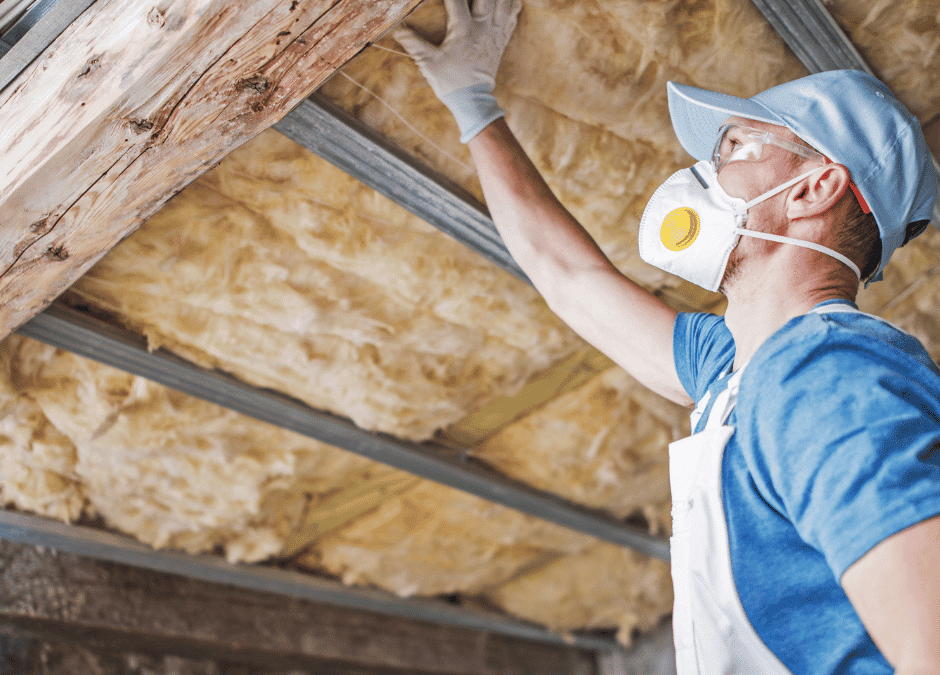Are you unsure how to select the right insulation for your home to maximize comfort and efficiency? In this blog post, South Atlanta Insulation Experts explain the significance of understanding R-values, which are essential for choosing insulation that suits your needs. We’ll guide you through what R-values mean, their impact on your home’s energy efficiency, and how to make the best insulation choices.
Understanding R-Values
R-values are a critical factor in selecting insulation as they measure the material’s resistance to conductive heat flow. The higher the R-value, the greater the insulation’s effectiveness. Homeowners need to understand R-values because they directly affect the energy efficiency of a home, influencing heating and cooling costs and overall comfort. Different materials have different R-values; choosing the right one can mean significant energy savings.
How R-Values Affect Energy Efficiency
Insulation with higher R-values enhances a home’s ability to maintain stable internal temperatures regardless of external weather conditions. This efficiency reduces the workload on heating and cooling systems, lowering energy consumption and cost. Effective insulation, indicated by appropriate R-values, keeps homes warmer in the winter and cooler in the summer, optimizing comfort and reducing utility bills. Therefore, understanding and selecting the right R-value can have a substantial impact on a home’s energy footprint.
Types of Insulation and Their R-Values
Choosing the right type of insulation for specific areas of your home is crucial for maximizing energy efficiency. Below, we explore various insulation types and their respective R-values to help you make an informed decision.
- Fiberglass Batts and Rolls: These are common for residential insulation, offering R-values ranging from R-2.9 to R-3.8 per inch. They are easy to install between studs and joists and are cost-effective for both walls and attics.
- Spray Foam Insulation: This type provides higher R-values of about R-6 per inch. It is excellent for filling gaps and stopping air leaks due to its expansive nature, making it ideal for hard-to-reach areas.
- Cellulose: Typically blown into place, cellulose has an R-value of approximately R-3.1 to R-3.8 per inch. It is made from recycled paper products and is a greener option that provides excellent sound insulation.
- Rigid Foam Boards: Offering R-values from R-4 to R-6.5 per inch, these boards are helpful for insulating exterior walls, basements, and foundations. They can be cut to fit various spaces, providing a high insulation value where thickness is limited.
- Reflective Insulation: This is best for reducing cooling costs in hot climates, with R-values around R-3 to R-7. Reflective insulation is effective at blocking radiant heat from entering attics and roofs.
- Mineral Wool: Available in batts and loose-fill, mineral wool has R-values similar to fiberglass but with better fire resistance and soundproofing capabilities. It is denser and more effective at blocking heat transfer than fiberglass.
Understanding the different types of insulation and their R-values can guide you to the best choice for your specific insulation needs.
Determining the Right R-Value for Your Needs
Choosing the correct R-value for insulation depends heavily on specific factors such as your home’s location, climate, and the part of the house you are insulating. Attics, for instance, may require insulation with higher R-values because they are directly exposed to the roof and external temperatures. Similarly, basements or external walls might have different requirements based on moisture levels and exposure to cold.
R-Values for Different Climates
The necessary R-values for effective insulation vary significantly by climate. In colder northern areas, high R-values are crucial to prevent heat from escaping during the winter. At the same time, in hotter southern climates, insulation should focus on keeping heat out during the summer. Properly chosen R-values tailored to specific climatic conditions can significantly enhance a home’s energy efficiency and comfort levels.
Installation: Maximizing the Effectiveness of R-Values
The effectiveness of insulation is not just about choosing the right R-values but also ensuring proper installation. Insulation must be correctly fitted without gaps, as even minor spaces can significantly reduce its overall effectiveness. It should snugly fill the space between joists and studs and, in cases like fiberglass batts, should not be compressed, as this reduces its R-value.
The Cost-Benefit of High R-Value Insulation
While higher R-value insulation typically costs more upfront, the long-term savings on energy bills can make it a financially beneficial decision. Higher R-value insulation can dramatically reduce the need for heating in winter and air conditioning in summer, quickly offsetting the initial investment. Homeowners should consider the long-term energy cost savings when evaluating the cost-benefit of different insulation options.
Updating Your Insulation: When It’s Time
Signs that you might need to update your insulation include noticeable drafts, uneven room temperatures, and higher-than-usual heating or cooling bills. If the insulation is visibly damaged, degraded, or infested with pests, it is likely not performing effectively. Older homes might not have been insulated to modern standards and can often benefit significantly from updating insulation to contemporary, higher R-values.
Contact Us for Insulation Services
Choosing the right insulation is critical for enhancing your home’s energy efficiency and comfort. South Atlanta Insulation Experts are here to help you understand and select the appropriate R-values for your insulation needs. Contact us for personalized advice and professional installation services that ensure your home is cozy and cost-effective year-round.

Recent Comments